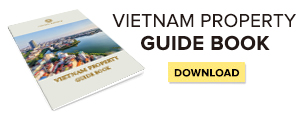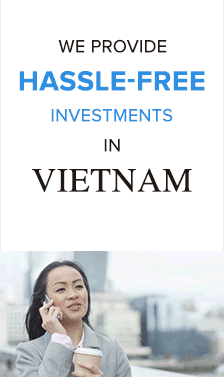CBRE: Vietnam leads Southeast Asia in infrastructure spending
Experiencing large-scale urbanization and with a positive economic outlook, the demand for infrastructure in Vietnam has intensified.
Urban growth in the country has increased from 27 per cent in 2005 to 34 per cent in 2015, while the figure in Thailand was 50 per cent.
Vietnam currently leads Southeast Asia in infrastructure spending, at 5.7 per cent of GDP, according to the latest report from CBRE. The report also identified a challenge to increasing infrastructure in ASEAN as being a lack of private participation.
As noted by the Asian Development Bank (ADB), more than 90 per cent of Asia’s infrastructure investment comes from the public sector.
The urban railway lines in Ho Chi Minh City and Hanoi are the largest infrastructure projects fostering the development of satellite economic areas.
There are other significant ongoing projects, such as the Hanoi-Hai Phong Expressway, Bach Dang Bridge, Van Don International Airport, and National Road 4B, and projects in the early stages of planning, such as the Eastern Economic Corridor and the tollway connecting Ho Chi Minh City and Phnom Penh, Cambodia, which should benefit modern industries such as automobiles, electronics, tourism, agriculture, construction, and transport.
Putting Vietnam in a regional context helps evaluate the potential effects of changes in the dynamics of the regional economy.
“The logistics sector should be the main beneficiary of ASEAN’s high levels of infrastructure investment in the short to mid-term, given increased connectivity within each country and between neighboring countries,” the CBRE report stated.
In the longer term, decentralization within metropolitan areas and sub-national regions will provide plenty of opportunities for developers, owners, and occupiers.
The report also highlighted various key projects in and between countries and discussed ways in which connecting the region would transform industries and the real estate landscape.
The ASEAN Economic Community has a vision of liberalizing markets and improving the mobility by skilled people between countries. Individually, countries have been building up their own infrastructure prowess.
Source:VN Business
Vietnam’s economy growth a positive
Vietnam is the sixth largest economy in the 10-member ASEAN bloc, trailing the Philippines yet followed by Myanmar. Its service, industry and agriculture sectors account for, respectively, 44%, 39% and 17% of GDP. Major industry and service sectors of the country include manufacturing, mining, construction, real estate and finance.
In the first six months of 2017, Vietnam’s economy rose 5.7% year-on-year (YOY) thanks in part to the expansion in the industry sector, with manufacturing and processing recording a 10.2% growth. In the same period, the service sector also showed a solid 6.9% increase, supported largely by the 7.1% growth in wholesale and retail. In August 2017, Vietnam’s average consumer price inflation rate registered a YOY rise of 3.8%, driven mainly by higher prices for healthcare and medicine services.
The Vietnamese government has increased the minimum wage between 2010 and 2015 by an annual average of 18%. The National Wage Council announced in 2016 to raise the minimum wage by 7.3% from January 2017, lower than 12.4% for 2016. Nevertheless, Vietnam’s new monthly wage in Hanoi and Ho Chi Minh City (HCMC) now stands at US$166. The Minimum Wage Adjustment Road Map to 2020 released by the Ministry of Labour expects the minimum wage in Region One (covering Hanoi and HCMC) to go up to VND4.8 million (US$213) in 2020.
Under the Master Plan on Economic Restructuring in 2013-2020, restructuring of public investment, banks, and state-owned enterprises (SOEs) is high on government priorities. The Vietnamese authorities aim to divest 406 SOEs by 2020, with 135 scheduled for 2017 alone. SOEs targeted for divestment include the Vietnam Engine and Agricultural Machinery Corporation (VEAM) and the Airports Corporation of Vietnam (ACV).
To accelerate restructuring of the banking system, the Vietnamese government allowed foreign investors to own a bigger share in local banks, in which the equity limit for strategic foreign investors was lifted from 15% to 20% from 2014. In 2015, Vietnam further loosened its restriction on foreign ownership in public companies by allowing equity share of 100% in most public companies, with the exception of a few sensitive industries such as banking and defense.
Vietnam’s merchandised exports surged 18.9% YOY to US$97.8 billion in 1H 2017, while imports rose 24.1% YOY to US$100.5 billion, resulting in a trade deficit of US$2.7 billion. The export surge was caused by the rise in demand of electronics, computers and components as well as machines and equipment.
Exports of electronic items accounted for 30% of total merchandise exports in 2016. In particular, exports of phones and components rose 14% YOY to US$34.5 billion, driven by the foreign-invested manufacturing sector. Vietnam’s top export markets in 2016 were the US, China and Japan.
Major imported items in 2016 consisted of machinery, equipment and parts, and electronics, computers and accessories. A large part of Vietnam’s imported capital goods is related to export assembly. China is the largest source of Vietnam’s imports, followed by Korea and Japan.
Vietnam’s impressive export growth is largely driven by FDI. According to the Ministry of Planning and Investment, the FDI sector accounted for 72% of Vietnam’s total exports and nearly all of its telephones, electronics and computers and components exported in 2016.
As at 20 July 2017, Vietnam attracted a total FDI inflow of US$12.9 billion. Japan was Vietnam’s largest FDI source (US$4.8 billion), followed by Singapore and Korea. Hong Kong was Vietnam’s fifth largest source of inward FDI in the same period, valued at about US$0.6 billion. Major investment fields include manufacturing, automotive and real estate.
In May 2017, Vietnamese President Tran Dai Quang indicated that his country attaches great importance to broadening and deepening economic, trade and investment relations with China, which is pushing forward the Belt and Road Initiative, Two Corridors and One Circle Plan with Vietnam, as well as the construction of cross-border economic zone in Vietnam.
Source:HKTDC
Vietnam’s manufacturing sector continues to improve
Russian automobile company Sollers plans to set up an assembly plant in Vietnam in 2018, the company’s General Director Vadym Shvetsov said on the sidelines of the third Eastern Economic Forum in Vladivostok, Russia on September 6. The company is negotiating terms with Vietnamese partners, including technical issues, industrial assembly facility, he said, adding that Vietnam also has conditions for setting up the facility.
In July, Sollers first announced the plans to create a joint assembly plant in Vietnam with initial capacity of 1,000 cars per year, according to Shvetsov. Sollers has worked with world leading automobile makers such as Ford, SsangYong and Mazda.
Furthermore, Vietnam’s leading property developer Vingroup [VIC.HM] said on Saturday it launched construction of a car factory in a project worth $1-1.5 billion in the first phase. The project is part of Vingroup’s expansion plan into the heavy industry of Vietnam, its vice chairman was quoted as saying in a statement, following similar moves in other major sectors such as retail and health care.
Vingroup said it hopes to become a top car manufacturer in the Southeast Asian region, making 500,000 cars per year by 2025.
The company expects to produce 100,000-200,000 vehicles per year in the first phase, including 5-seat sedans, 7-seat SUV and electric motorbikes.
Vingroup’s spokeswoman told Reuters the factory would introduce the first electric motorbikes in 12 months and first cars in 24 months.
Its construction brand VINFAST signed a memorandum to borrow $800 million from Credit Suisse AG [CSGN.S] to build the 335-hectare (827.8 acres) factory, located in Vietnam’s northern city of Haiphong.
Activity levels across Vietnam’s manufacturing sector continued to improve in Auguest. The Vietnam Manufacturing Purchasing Managers’ Index (PMI) – a composite single-figure indicator of manufacturing performance – ticked up to 51.8 in August from 51.7 in July, signaling a further modest monthly improvement in the health of the sector, Nikkei has said in a report.
The recent improvements in the domestic manufacturing sector continued in August, extending the current sequence of strengthening business conditions to 21 months. A solid and accelerated rise in new orders was central to the latest improvement in business conditions. New business has increased continuously since December 2015 while the rate of expansion in new export orders also quickened and was the fastest in four months.
Despite the marked increase in input costs, firms continued to reduce their output prices in August. Charges decreased for the fourth month running, albeit only marginally. Purchasing activity increased at a faster pace, with the latest expansion linked to higher new orders. Stocks of purchases also rose; the 14th month running this has been the case.
Post-production inventories, on the other hand, decreased for the second successive month, albeit marginally. Panelists suggested that the dispatch of finished products to customers were behind the reduction.
The reported noted that business confidence improved in August and was the strongest since March. Anecdotal evidence suggested that firms were planning to increase output, helped by expansions in capacity and predictions of rising new orders. More than 56 per cent of respondents predicted a rise in production over the coming 12 months.
“Vietnam’s manufacturing sector continued to perform steadily mid-way through the third quarter of the year,” said Mr. Andrew Harker, Associate Director at IHS Markit, which compiles the survey. “There were further positive signs regarding new orders, which should help the sector maintain growth going forward.”
Source:Vietnam+ , Reuters , Vietnam Economic Times
Investing in HCMC, Vietnam — Seminar on Property Market Latest Trend
Ho Chi Minh City (HCMC) of Vietnam has been prospering rapidly, with its Thu Thiem’s development projects making it the “Pudong” / “West Kowloon” of HCMC, together with the new international airport, the MRT to be built, plus the “One Belt, One Road” initiative, the investment potential of its property is vowed to soar. What’s more, Vietnam has recently passed the new housing law which allows foreigners to buy properties in the country for a 50-year leasehold with renewal possibility upon expiration, turning the city into an investment hotspot for overseas investors.
Golden Emperor partnered with Kusto Group to hold a HCMC Property Investment Seminar to thoroughly analyze the current market and share some investment tips. Diamond Island by Kusto Group possesses great investment potential with high rental yield, was launched at our event as well, the seminar attracting many investors attended over the weekend.

Above: Many investors attended the weekend exhibition.

Above: Terence Chan, Director of Golden Emperor, provided a presentation on investing in Ho Chi Minh City.

Above: Kusto Group’s latest property project from Ho Chi Minh City, Diamond Island also be featured at this event.

Above: Our clients in Hong Kong had exclusive offer during the event.
Golden Emperor’s “Movie Night—Happy Thursday” A complimentary screening for our privileged clients
Golden Emperor is dedicated to serving the best to our clients, other than bringing them outstanding properties with promising investment potential and our exceptional one-stop service, we also hold strong the mission to best connect with our clients in order to build a well-bonded relationship. Throughout the years, we have been holding various events to extend our gratitude to our valued clients, and every time it was a tremendous success.
To compliment our privileged clients on their continued support and trust, Golden Emperor held an exclusive “Movie Night, Happy Thursday” event at Olympian City yesterday, treated more than 300 guests to watch Wolf Warriors 2 and had a wonderful evening. In the future, we will keep presenting impressive overseas properties with promising prospect to go with more diversified activities to enrich our clients’ lives with many joyous moments to come.



























